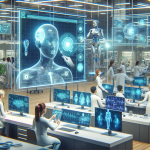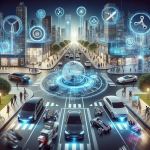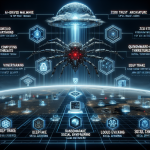The evolution of public sector governance is rapidly accelerating as we approach 2025. Governments around the globe are actively adopting innovative technologies and reforming outdated systems to meet the growing expectations of digital-age citizens. According to Deloitte’s 2025 Government Trends Report, a new era of transformation is underway—driven by data, collaboration, and an urgent need for resiliency. This article explores the most impactful trends shaping the future of public service delivery and how governments can enhance efficiency in this dynamic era.
The Driving Force Behind Public Sector Transformation
Governments are navigating a complex landscape shaped by rapid technological advancements, environmental uncertainty, and increasing citizen expectations for personalized, efficient services. This environment demands a shift away from reactive models toward proactive, agile governance structures.
Key transformation drivers include:
- Public demand for digital-first services
- Rising expectations for transparency and accountability
- Workforce modernization and hybrid work models
- Cybersecurity and data protection initiatives
- Fiscal pressures and efficient resource allocation
Top Government Trends to Watch in 2025
1. Digital Identity Frameworks
Citizens increasingly demand seamless and secure access to government services. Digital identity solutions are becoming foundational to public sector modernization. By 2025, governments are expected to adopt interoperable and privacy-centric digital ID platforms, enabling users to access multiple services with a single, secure identity.
Benefits:
- Enhanced user convenience
- Reduction in fraud and identity theft
- Operational cost savings for government agencies
2. Cloud-First Infrastructure
The cloud is no longer optional—it is a strategic enabler of agility and scalability. Governments are moving away from outdated legacy systems and embracing cloud-first architectures to increase resilience, ensure data continuity, and enable cross-agency collaboration.
Key initiatives include:
- Migration to secure, hybrid cloud environments
- Investments in Infrastructure-as-a-Service (IaaS) and Platform-as-a-Service (PaaS)
- Centralized data governance models for greater control
3. AI and Machine Learning in Decision-Making
Artificial Intelligence is revolutionizing how the public sector operates. From automating routine tasks to forecasting future challenges, AI empowers agencies to make smarter, faster, and more informed decisions. By integrating machine learning algorithms, agencies gain predictive capabilities and the ability to tailor services to individual needs.
Major applications include:
- Predictive analytics for better resource allocation
- Chatbots and virtual assistants for improved customer service
- AI-assisted policymaking and fraud detection
4. Agile Policy Development
The world is changing too fast for traditional policy cycles. In 2025, governments are exploring agile policy frameworks—an approach that replicates agile software development models. These iterative policy-making techniques allow for rapid experimentation, revision, and feedback integration to deliver better outcomes in shorter timeframes.
Agile governance includes:
- Piloting policies before full-scale deployment
- Establishing rapid feedback loops with stakeholders
- Utilizing real-time performance metrics and dashboards
How Governments Can Embrace These Trends
Leadership and Culture Shift
Transformation begins at the top. Government leaders must embrace a culture of innovation, openness, and change management. Encouraging collaboration across departments—along with choosing the right tech partners—is essential for scaled reforms.
Key action points:
- Upskilling the workforce to align with digital goals
- Implementing strong change management protocols
- Fostering experimentation and innovation within agencies
Citizen-Centered Design
Putting citizens at the heart of service design ensures relevance and efficiency. The public sector must adopt a customer experience mindset—providing digital platforms that are easy to navigate, inclusive, and secure.
Best practices include:
- User journey mapping for service improvement
- Deploying multilingual and accessibility-first platforms
- Engaging communities through co-creation and participatory design
Data as a Strategic Asset
Data is rapidly becoming the government’s greatest strategic asset. By responsibly collecting, storing, and analyzing data, agencies can uncover valuable insights that directly inform smarter policymaking and better resource utilization.
Strategic data use requires:
- Robust data governance and privacy frameworks
- Inter-agency data sharing ecosystems
- Advanced analytics platforms and dashboards
Looking Ahead: The Future of Public Sector Efficiency
As we move into 2025 and beyond, the pressure on governments to deliver streamlined, equitable, and future-ready public services will only intensify. Embracing the digital transformation trends outlined in Deloitte’s report is not just a strategic advantage—it is a necessity.
Governments that act boldly today will be better positioned to handle global disruptions, leverage new technologies, and create inclusive societies that thrive on efficiency, transparency, and agility.
Final thoughts:
- Public sector leaders must prioritize digital transformation
- Citizen engagement and trust are foundational to success
- Agility, experimentation, and technology integration will be key in 2025
The journey to transforming public sector efficiency has already begun—2025 is simply the next milestone.
“`











